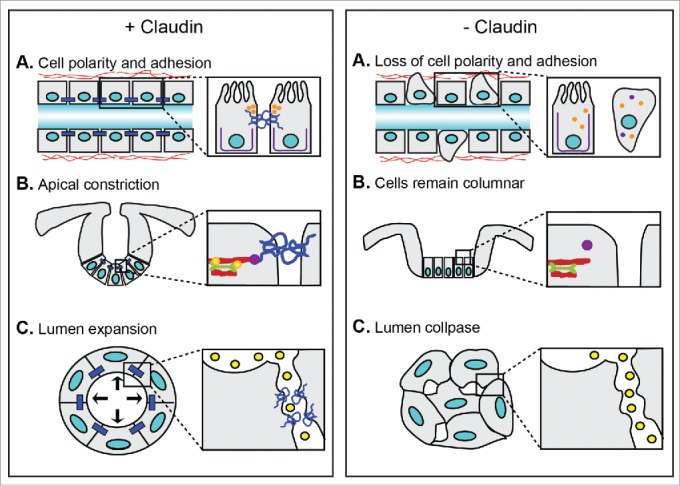Figure 3.

Events in tubulogenesis that are regulated by claudins. (A) Left, claudins maintain apical-basal polarity by preventing the mixing of apical (orange) and basolateral (purple) proteins. This is required for cells to maintain their epithelial identity. They also function as adhesion molecules. Right, in the absence of claudins, apical and basolateral proteins mix and some cells lose their epithelial identity and become mesenchymal. Cells also detach from one another. As a result, the epithelial tube becomes disorganized. (B) Left, claudins anchor RhoA (purple) to the apical cell membrane. This interaction is important for actomyosin contraction and invagination of epithelial cells by ensuring that RhoA/ROCK signaling phosphorylates (yellow circles) and activates myosin light chain (green). Right, in the absence of claudins, RhoA is distributed throughout the cytoplasm where it does not activate ROCK and phosphorylation and activation of myosin light chain fails to occur. Consequently, cells do not undergo apical constriction and invagination does not occur. (C) Left, claudins form paracellular pores to restrict the paracellular movement of water molecules (yellow circles) and maintain hydrostatic pressure that is required for lumen expansion. Right, in the absence of claudins, water molecules can freely pass between cells leading to loss of hydrostatic pressure and collapse of the lumen.
